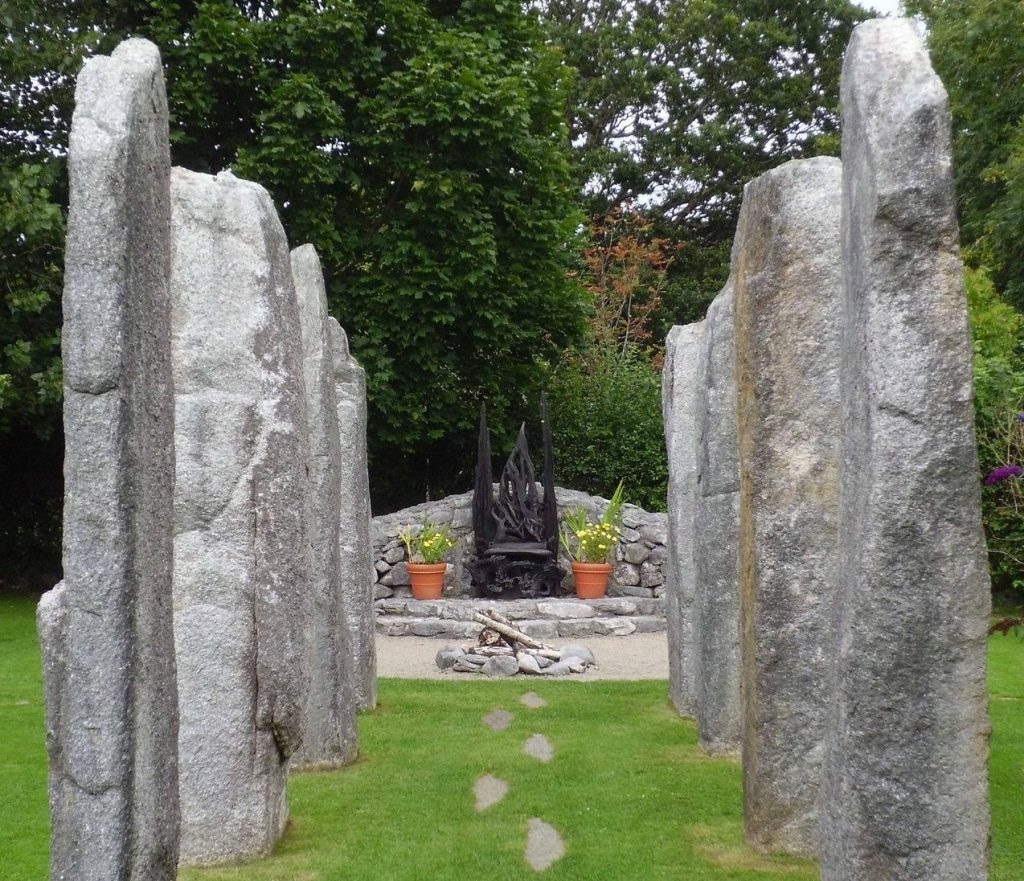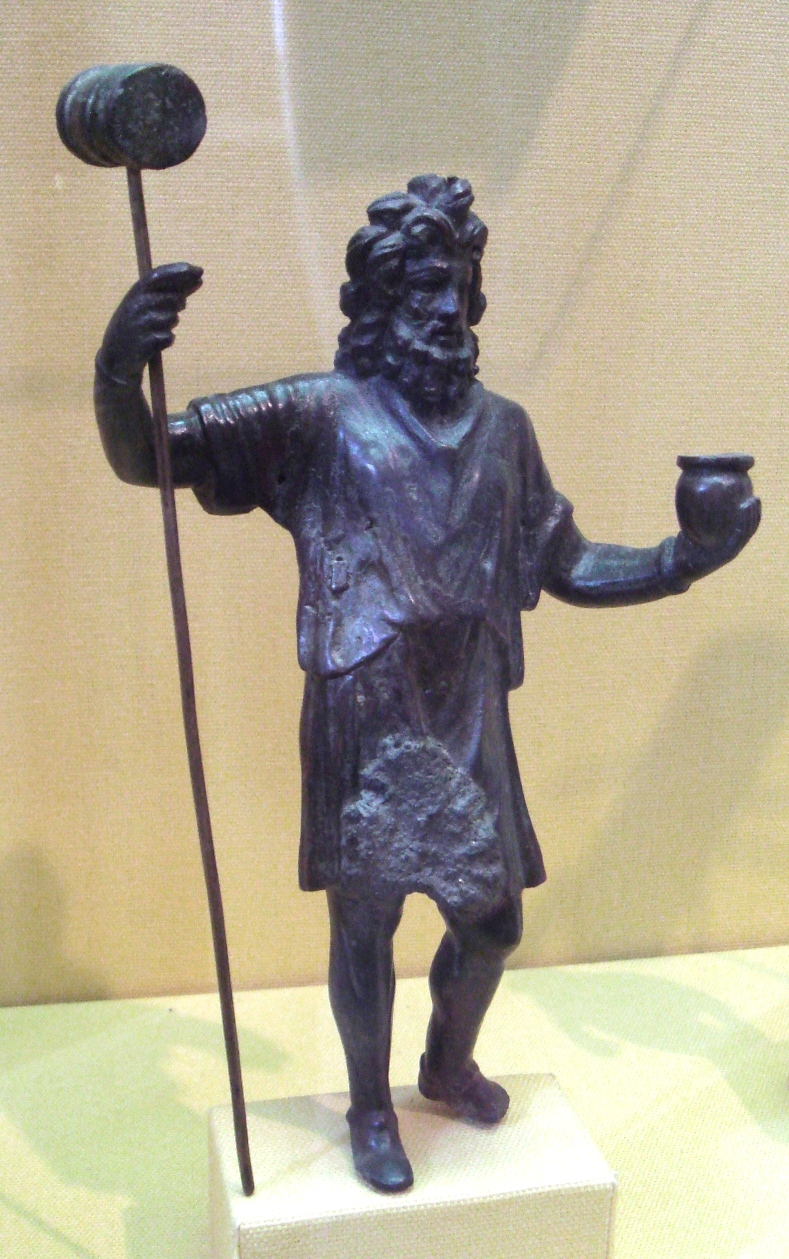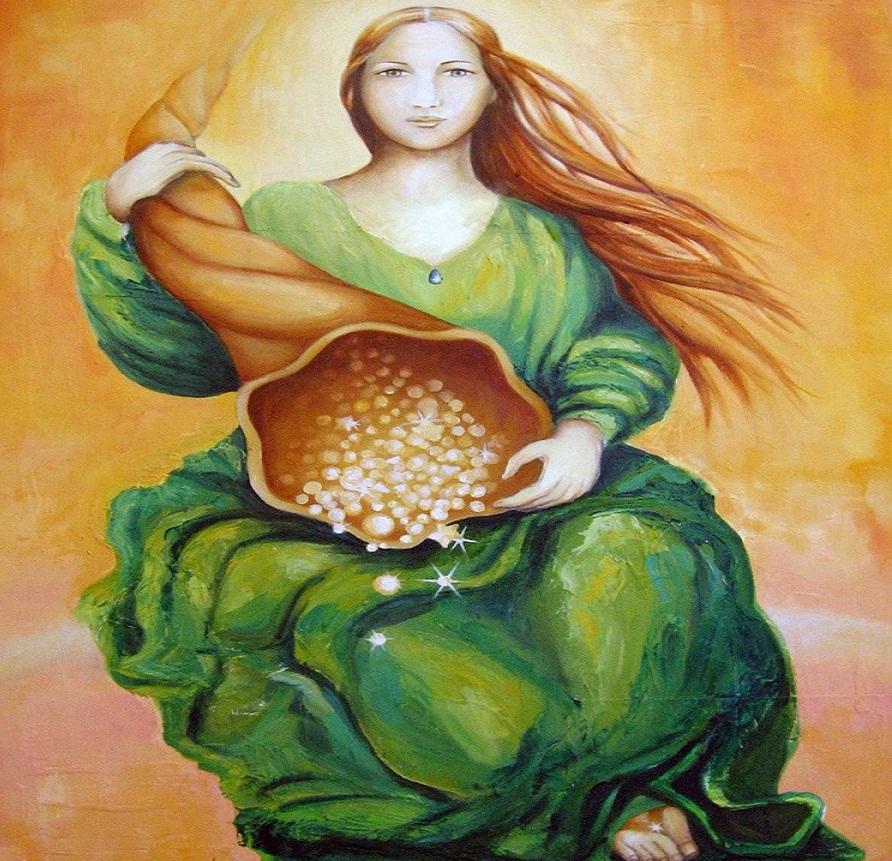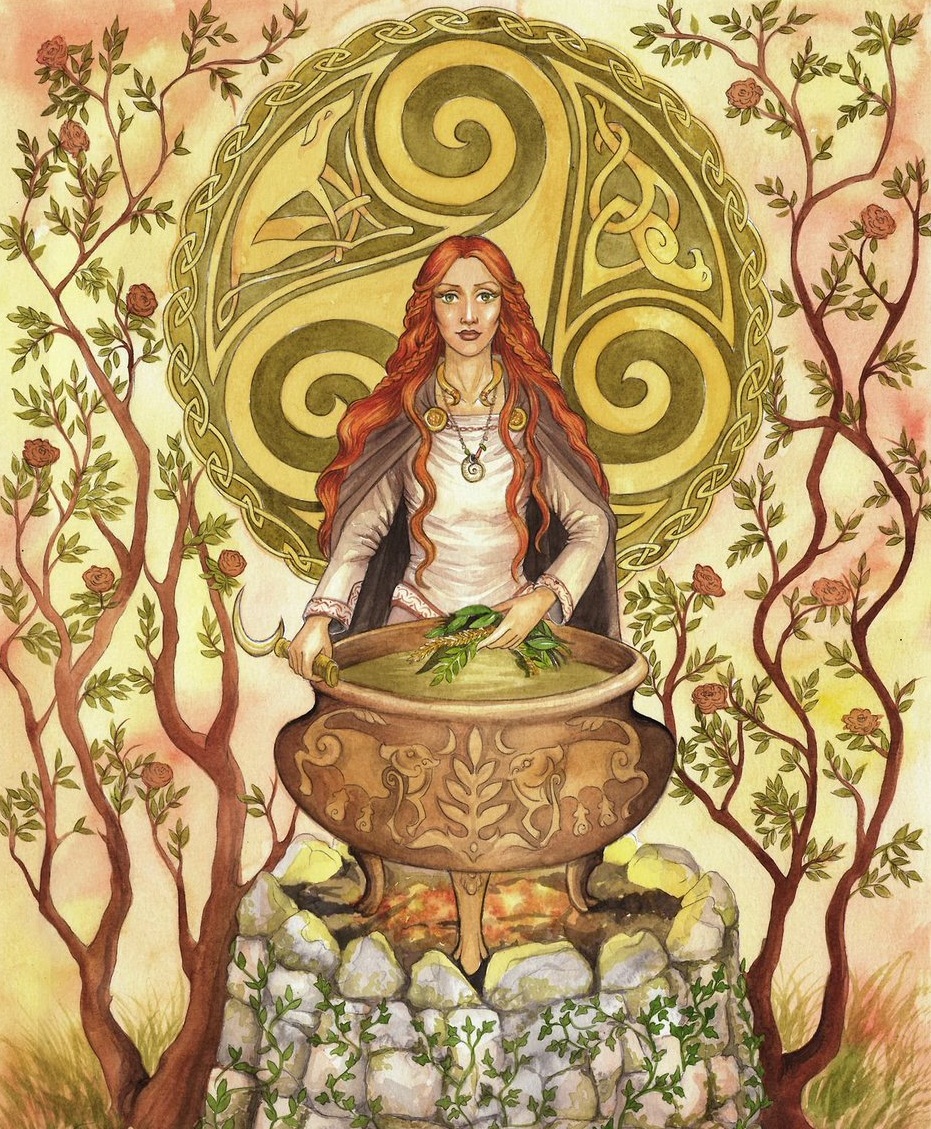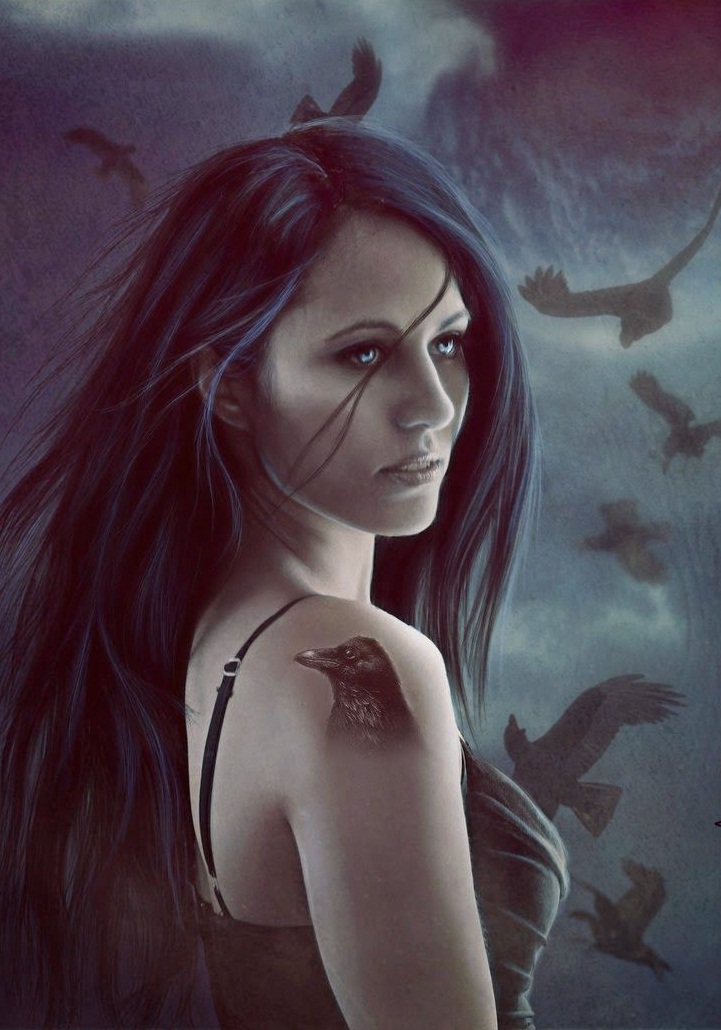We give you valuable information about the celtic gods they are part of a community socio-cultural identity that has been established in the central part of the European continent. They are a group of gods that have power over nature and extraordinary abilities of the human being. For this reason they are highly adored. I invite you to continue reading the article and learn more about these fascinating Celtic gods!
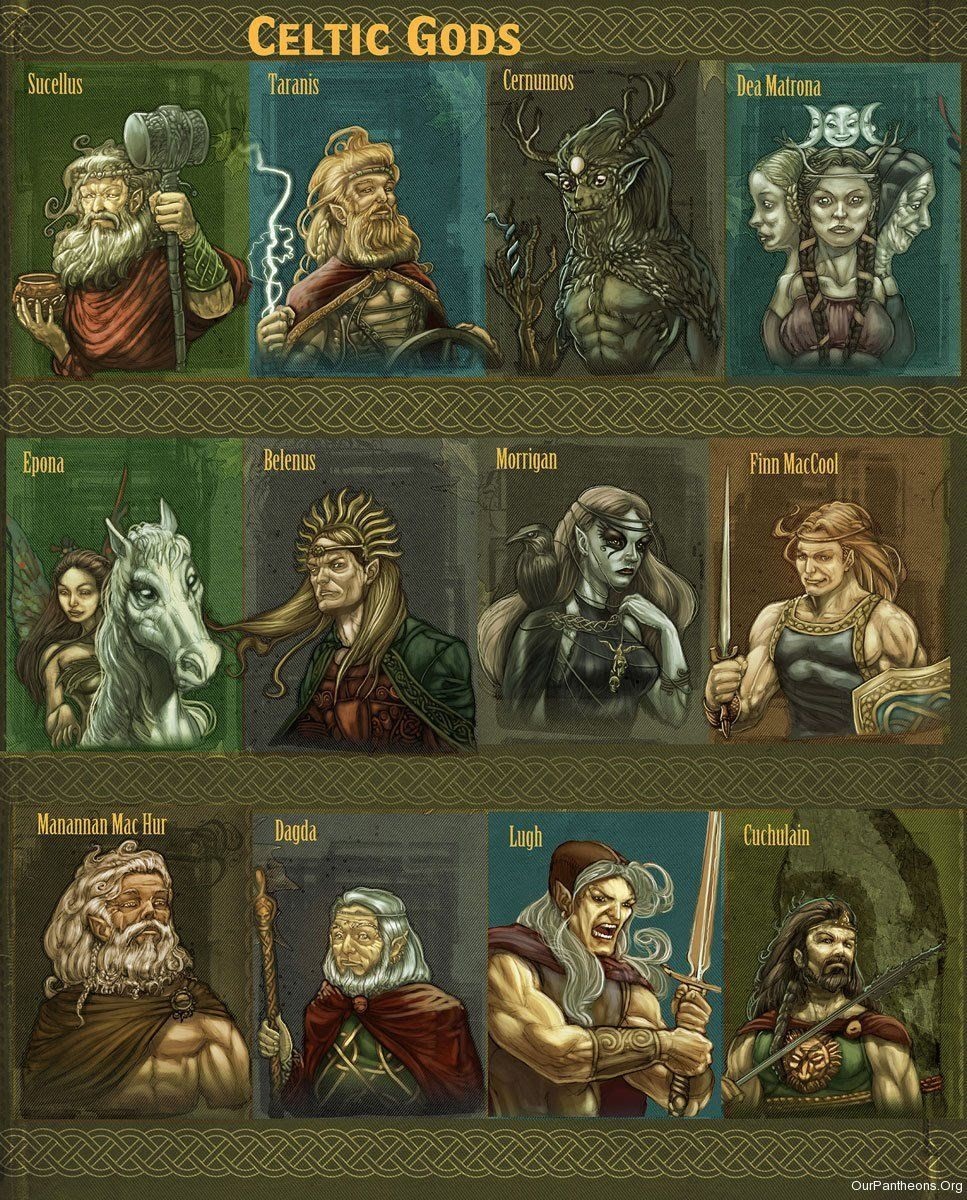
The Celtic Gods
The term Celtic is a word that was used to refer to a people or group of peoples that existed in the Iron Age. They communicated with a language called Celtic which is one of the branches of the Indo-European languages. They are also known as a group of tribal societies from the European continent, which shared their material culture in the Iron Age between 1200 to 400 BC.
Celtic mythology is made up of a large number of stories of their religion and as was normal for that time, the Celts maintained a polytheistic mythology that was based on a set of Celtic gods. That they were figures that represented the force of nature or the ancestral principles for the Celtic people.
Although the history that is known about the Celtic gods is very little, since there are not many documents written in the Gallic language. Because according to the pagan Celts they were not very literate. Existing documents are written in the Greek, Latin, and Northern Italic alphabet. In a document written in Greek it is stated that the Emperor Julius Caesar bears witness that the Celtic priests are Druids which he meant, that he was inspired by the Celtic gods.
In what is known about the Celtic world and the Celtic gods, it is that they were not politically unified, since a part of the Celtic people was not culturally influenced. That is why there were different local practices about the polytheistic religion they practiced. A clear example is that much of the Celtic people worshiped the Celtic god Lugh (Lug, Lugh or Lugus), but on the other hand he was known as a Roman god.
There are inscriptions of the Celtic people where more than three hundred Celtic gods are known. These gods have been compared to the gods of Rome, which in turn have survived to be more representative as local gods, and who were highly worshipped.
However, at present the Celtic gods are a vital part of the social and cultural identity that has been established in the central region of the European continent, including some regions of the northwest, since they have had great contact with the Romans and the Celtiberians. and in this way that the Celtic gods merged with other deities emphasizing nature and deities charged with magic.
The main Celtic Gods
As explained before, the Celts were a group of peoples that did not remain organized, there were various tribes that offered offerings and rites to different gods, thus giving rise to a group of Celtic gods that we are going to explain the most important in the present Article:
God Dagda "The Good God"
In the Celtic people, as there are many Celtic gods, one of the most worshiped gods is the well-known god Dagda, which means the good god. He is considered the most important God of the Celtic gods, since he is an inspiring God of good and is capable of mastering white magic, he also has a great seduction that neither goddesses nor humans can resist.
The Dagda God was a very important member of the Tuatha Dé Danann community, a group of gods from Ireland, he was one of the Celtic gods who had great interest in women, that is why he seduced goddesses and human women. The relationship that the Dagda God is best known for was with the Morrigan, the Celtic goddess of death and destruction. This goddess had promised to give freedom to the people of the Dagda God in exchange for her eternal love.
Another known love relationship of the Dagger God was the one he had with his sister-in-law, the goddess Boann, who was married to his brother Elcmar. After spending time with the goddess, she became pregnant and had her first child, who was known as Angus, the God of love and youth.
The Dagda God was the chief of the Tuatha Dé Danann, for a long time and participated in several battles against the Fomorians, an army of large and deformed demons, these demons were the first inhabitants of Ireland. But after living in constant battles the people of the Dagger God were defeated by the sons of Milesius, after this defeat he was banished by the Milesians who were the last inhabitants of Ireland.
Among the most important characteristics and powers that the Dagda God has, is that he possessed a great club or magic club, with which he could take the lives of his enemies and be able to resurrect the dead. In this same way the God Dagda had under his power a cauldron that could provide his people with plenty and no one could be satiated. It is a very prominent symbol in Celtic mythology.
In the same way he had an oak harp with which he could control the seasons, as well as being able to interpret chords with magical effects, this harp was known by the name of Uaithne.
He is also the most revered God of the Celtic priests who are known as Druids. (people inspired by Celtic gods). In the Celtic people, the Dagda God is considered a member of the high priestly class, since he is the master of the elements, divination, music and above all a great warrior. All these characteristics are going to belong to the Celtic gods.
God Sucellus "The God of agriculture"
He is another of the most important Celtic gods that existed for this people. The God Sucellus is known as the god of agriculture and sowing, as well as the God of alcoholic beverages of the Gauls. He is also credited with traditional Celtic medicine and the protection of forests.
In this same way the Celtic god Sucellus is attributed the powers of being an omnipotent creator in the Celtic peoples known as Arvernos and Boyos. This god is represented with a very strong body with a very large beard and of middle age. He always carries a large hammer or club with a very long handle and in others he is represented carrying a barrel of beer in his hand.
In the stories we have about the Celtic God Sucellus he uses his great hammer to be able to hit the earth and each seed sown can germinate in the spring to give the best harvests. There are other versions where he uses his big hammer to punish people who destroy crops.
One of the main attributions that the Celtic God Sucellus has is that they unite him with agriculture and harvests. In other situations they represent him together with his wife Nantosuelta, who are associated with prosperity in the domestic world.
In this same way, the god Sucellus is attributed the formation of storms and thunder, which makes him resemble the God Thor that belongs to the Nordic culture. Since the storm or thunder occurs when the God strongly hits the club with the earth.
As is one of the most important Celtic gods. The Celtic priests always make offerings to him since his work on earth is very prominent because if he stopped doing his work, it would generate a great collapse on earth, leaving the Productive Lands infertile and the heavens would fall to pieces.
God Taranis "The God of Thunder"
He is one of the Celtic gods who will represent thunder as well as the noise it produces. For many people of the Celtic people he was known as the thunderous God. He inspired fear and dread among people, since when thunder fell it caused destruction and the noise that people made related to a storm approaching.
In regions such as Gaul, Austrias and Roman Britain. He paid an important cult to the Celtic God Tarani. In the part of Austria he was worshiped so much that there were regions called Taranes, Tárano, Tarna and Toraño. Regarded as the protective god and a great warrior, he is depicted as a figure of a great bearded man who walks on foot or on a horse. He also carries in his hand a wheel that represents the cosmic wheel where he controls the days and nights.
In the other hand he carries a figure of lightning, which is his power to cause lightning and thunder in storms. Although she is a deity who represents many followers. He is associated with various events such as destruction and great storms that cause damage to the population.
Dea Dama "The Mother Goddess"
She is known in Celtic mythology as the mother of the Celtic gods and has a supreme place beside the Father God and as the mother of all Celtic deities. In some surviving Celtic manuscripts, the goddess Dea Dama represents a triad.
In its first phase, it is represented as a goddess woman (dana), who will seize the mother and fertility. The second phase is a girl goddess (Brígida) who will be the symbol of love and youth and the third phase is that of an old goddess (Anu), who represents death, as well as transcendence. But in the triad there is a common character which is benevolence.
She is known by name as the goddess Dea Dama, as well as Anu or Ana, which is her name in Ireland. She is also known as Brigit, she is considered as the mother goddess as she is the mate of the god Bije of Ireland. This God is known as the Father God of other religious cultures.
In the group of Celtic gods, the goddess Dea Dama is represented as the goddess of fertility, she is the mother of many gods but daughter of the Dagda God known as the good God. Along with other Celtic gods, she will represent light, day and life.
The goddess Dea Dama is the one who represents motherhood in the entire Celtic pantheon, a qualification that the Celtic goddess possesses is that she is the water in the sky. An example of this is that the name of one of her children is derived from the Danube River. The fertility of the goddess Dea Dama is related to the slope of the rivers. Because the waters of the rivers give life and fertilize the land, making it productive.
The cult that is paid to the goddess Dea Dama is established in many religions. Although the Celtic goddess Dea Dama is known in many ways, she retains her same senses of light, life, fertility, benevolence and compassion.
In the ancient Celtic culture it was difficult for them to accept the goddess Dea Dama as the patriarchal god of the time. But she had to be recognized as the mother of all gods. In difficult times when the crops did not take place, a rooster was sacrificed where three streams of water joined, with this ritual the annoyance of the goddess was appeased.
At present, sacrifices are made to him since his power of fertility is highly recognized, particularly in lands where good harvests are needed.
The God Lugh "The God of Sun and Light"
Being one of the most important Celtic gods in Celtic mythology. He is known to many people as the God who has unlimited powers, and who performs many functions. The God Lugh is known as the great god of Celtic Olympus. He is depicted as a handsome young man. The story that is told about the god Lugh is that he had unlimited powers, being the solar divinity of the forests.
The name of the God Lugh represents various meanings such as being luminous, white and somehow raven. The raven is said to be an animal that is linked with the god Lugh as they accompany him to various places. As the Celtic God Lugh was very prominent in all the acts that he performed. Emperor Julius Caesar could not help himself and compared it to Roman mercury.
The Celtic people celebrate a festival in honor of the god Lugh, since the God Lugh is known as the Sun God and charges the crops with energy so that they are abundant. That is why they hold the parties that were known as "Lughnasad". These festivities were held in the summer at night, so that during the course of the day the fruits and grains would begin to grow and be harvested in the morning.
The Goddess Morrigan "The Lady of Darkness"
The Goddess Morrigan known as the goddess of death and destruction. She is present in wars and has the power to infuse warriors with strength, anger and violence. The goddess Morrigan is also known as the goddess of sexual desire and passionate love.
Being the goddess that is found in all warlike confrontations. She takes the form of a raven so she can fly over each battle, instilling anger and courage in the soldiers. The origin of the goddess Morrigan is formed in a triad being her a beautiful maiden, a mother and a widow woman.
The goddess of darkness who, along with her sisters Badb, Macha and Nemain, were members of the Tuatha Dé Danann that belonged to the Celtic gods. They had great power and inhabited Ireland long before its current settlers.
She was also a goddess who had several lovers of the stature of kings and gods, her best known partner was the Celtic God Dagda known as the good God. She being a prominent goddess of the Tuatha Dé Dunann. She is known for another love that she had with a warrior named Cuchulainn.
This warrior was able to resist the seduction of the goddess, so they battled against it in various fields until he was able to defeat her no matter what forms she took. Until the warrior was wounded and the Goddess Morrigan had the opportunity to care for him and take away his pain, but she took him forever to keep him by her side.
The Celtic Goddess Epona "The protector of riders and horses"
She is one of the Celtic goddesses who has the role of protecting riders and horses. In the same way, she is related to fertility, she is considered the goddess of the earth and has the power to heal the people who come to her for help.
In Celtic mythology, the goddess Epona is a goddess who is very famous and is represented as a beautiful woman sitting on the back of a horse. Other people depict her as a water nymph.
The story of the Celtic goddess Epona is a bit confusing as her father was a common man who hated all women. But a mare that had features of divinity was the one who was in charge of giving the goddess a name.
In the Celtic people there was a very close relationship with horses and thanks to this animal the expansion of the legend of the Celtic goddess Epona was facilitated. The goddess she enjoys special affection in the Celtic culture and various rites are offered to her, as well as offerings.
In the law of correspondence that they believe with the Celtic gods, the Celtic people believe that the best day to pay tribute and request the intervention of the Celtic goddess Epona is Saturday. Since it is the right time to clean bad energies and negative environments. In the same way, he is asked so that the crops are given in abundance.
Some have pointed out that the goddess Epona is a guide for souls. But she still has the power to deliver hellish justice.
The God Benelus "The God of Fire, Sun and Light"
He is one of the Celtic gods known as the Sun God. The power he possesses is purifying and regenerating, which is why he is associated with healing. That is why he was highly commented on by the Irish people. On the first of May of each month a festival is celebrated in his honor.
People who attend the festival of God Benelus must dance and wear very colorful costumes since it is to welcome spring. This god is also known as Belenos, Beltayne, Balor, Beli, among others. He is a Celtic god who had healing powers as he was related to sunlight and fire. For this situation they compared him to the Greek god Apollo.
The Celtic god Belenus was married to the goddess Belisama who was the goddess of fire. Both gods are considered as the shining and shining Celtic gods. In addition to having healing powers. He has the responsibility to take care of the sheep and cattle.
At present, the festivities that they carry out in the name of the God Belenus are called "May Day". In this party there are people with colorful costumes and they must dance a lot. In the same way, people perform this rite in order to wake up the sun god and keep it burning at every dawn.
The Celtic God Cernunno "is the god of fertility and virility"
He is one of the Celtic gods, who is credited with the gift of virility, fertility, renewal, abundance and regeneration. He is the god who is known as the giver of gifts. He is also the lord of the dances, as he has powerful horns he had the responsibility of taking care of the forests, he is also the master of the hunt.
In other cultures this Celtic god is known as the god of death. Because he takes the souls to the underworld. In the medieval church, the Celtic god Cernunno was known by names such as: Lucifer, Satan or the devil.
The god Cernunno is represented as the green god and his figure is found in many representations today. For example, in Margaret Murray's book called "The God of Witches", she tells the story of the God Cernunno as a hunter.
If you have found this article about the Celtic gods important, I invite you to visit the following links:
